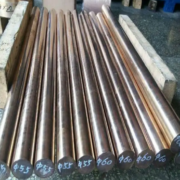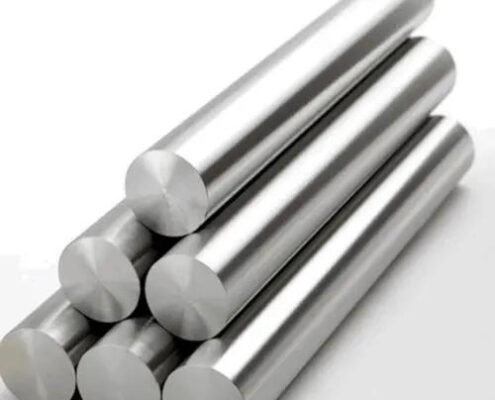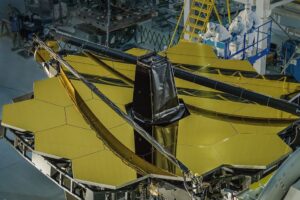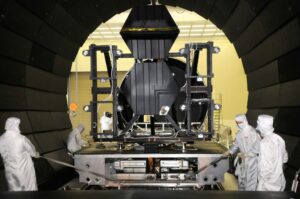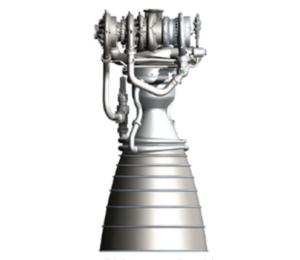Copper Nickel Alloy C71500 BFe30-1-1 Copper Rod Steel Plate Forgings
Copper-nickel alloy C71500 cupronickel alloy is widely used in heat exchangers and condensing pipes for coastal power stations and ships due to its excellent corrosion resistance and anti-fouling properties. The excellent corrosion resistance of cupronickel alloy is attributed to the Cu 2 O film formed on its surface, which effectively prevents further contact between the substrate and the solution. As the main additive elements of cupronickel alloy, iron and manganese have an important influence on improving the corrosion resistance of cupronickel alloy, but there is no consensus on the influence mechanism of iron and manganese in it.
As a forgeable material, cupronickel alloy is suitable for both hot working technology and cold working technology and can be used to produce various profiles required. According to the processing process of cupronickel alloy, the maximum cold working deformation before annealing can reach 50%. The cupronickel alloy pipe is usually bent during use. When bending, the smooth bending method can prevent the influence of non-end flow on the service life of the pipe [DD. Under normal circumstances, the phenomenon of stress corrosion does not occur in cupronickel alloys, but when the cold working temperature is extremely low, stress relief heat treatment must be carried out, and the heat treatment temperature is 300 ° C ~ 400 ° C.
The complete annealing temperature of B10 alloy is 700℃~800℃, and the complete annealing temperature of B30 alloy is 750℃~850℃. The specific time and temperature of complete annealing depend on the degree of cold working, section thickness, degree of annealing treatment, and grain size of the alloy. Sure. Before heat treatment, the oily residue on the surface of the alloy must be removed to avoid the formation of the carbonaceous film. The carbonaceous film can cause pitting corrosion on the surface of the cupronickel alloy. Under certain working conditions, it will increase the sensitivity of impact corrosion, thereby reducing cupronickel alloy. Service time in practical application
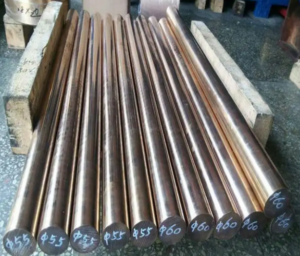
Both B10 and B30 cupronickel alloys exhibit good resistance to seawater corrosion and biofouling under many conditions. Among them, the cupronickel alloy of B10 has better anti-biological accumulation ability. When the water speed is greater than 1m/s, the tiny organisms attached to the metal surface will be easily separated and removed. When the material does not have the ability to resist bioflooding, organisms in seawater will strongly adhere to its surface and grow in large numbers, resulting in a reduction in the service life of the material. Although some materials have good biofouling resistance, they do not have the ability to resist seawater corrosion, which will also reduce the service life. In addition, when the cupronickel alloy components in seawater are attached to the joints and surfaces of the components, the crevice corrosion resistance of cupronickel alloys is better than that of other common alloys. Cupronickel exhibits good corrosion resistance even under static or stagnant conditions that may occur during plant commissioning or overhaul
BFe30-1-1 cupronickel alloy has good solderability. However, this welding method is rarely used, because the joint strength obtained by this welding method does not meet the actual service requirements of cupronickel alloy, and the galvanic metal corrosion will be aggravated in a corrosive environment. Traditional brazing methods can be used, but a high silver filler metal is recommended, which minimizes the chance of corrosion of cupronickel. Copper-phosphorus and copper-silver-phosphorus solders should not be used because their use increases the risk of intergranular corrosion and hydrogen embrittlement. Re-cold-worked cupronickel alloy materials should be recrystallized and annealed before brazing to avoid excessive penetration and cracking between the brazing alloy and the base metal.

